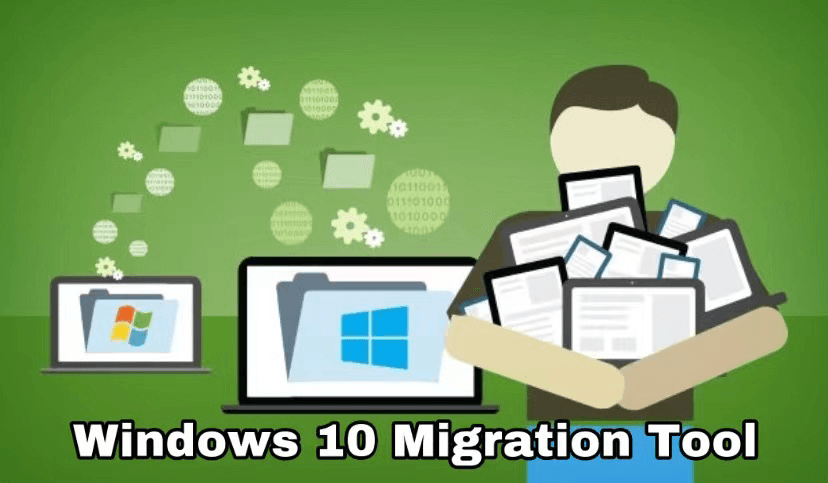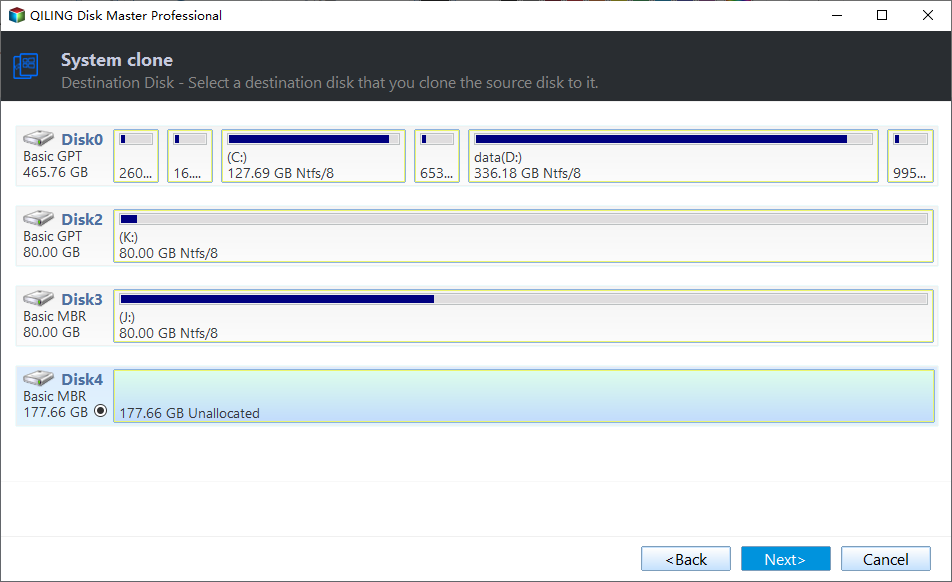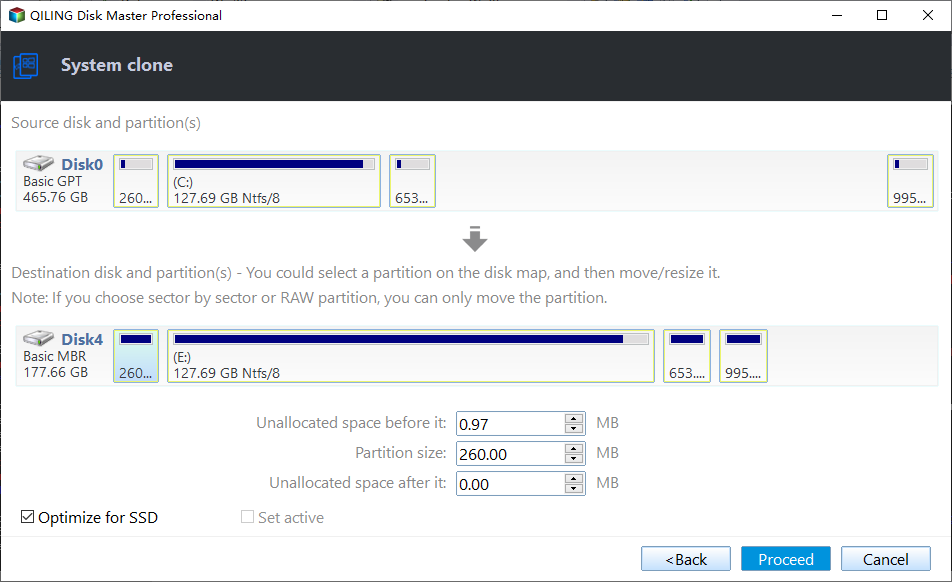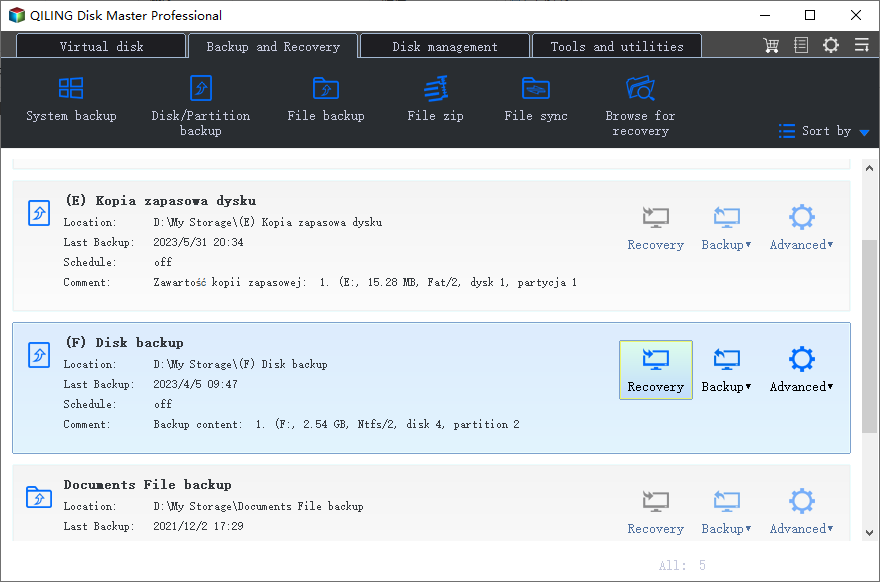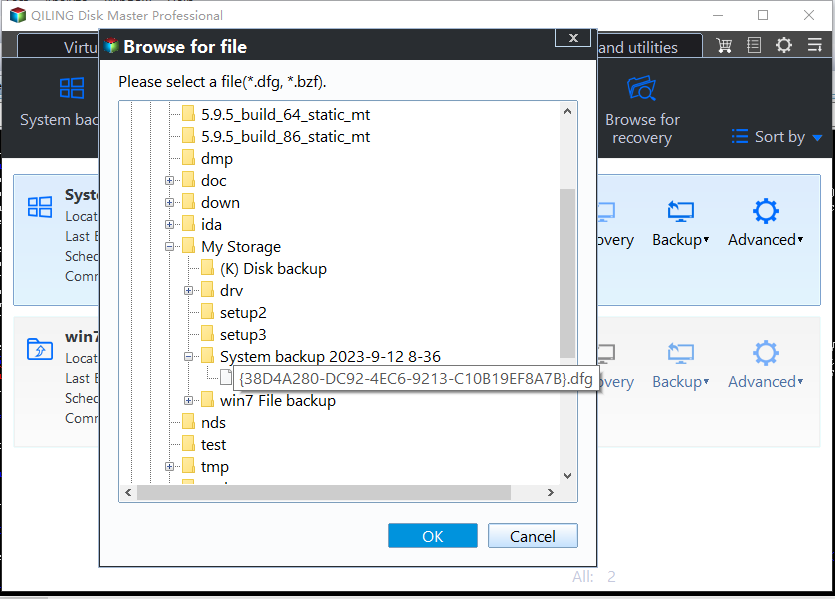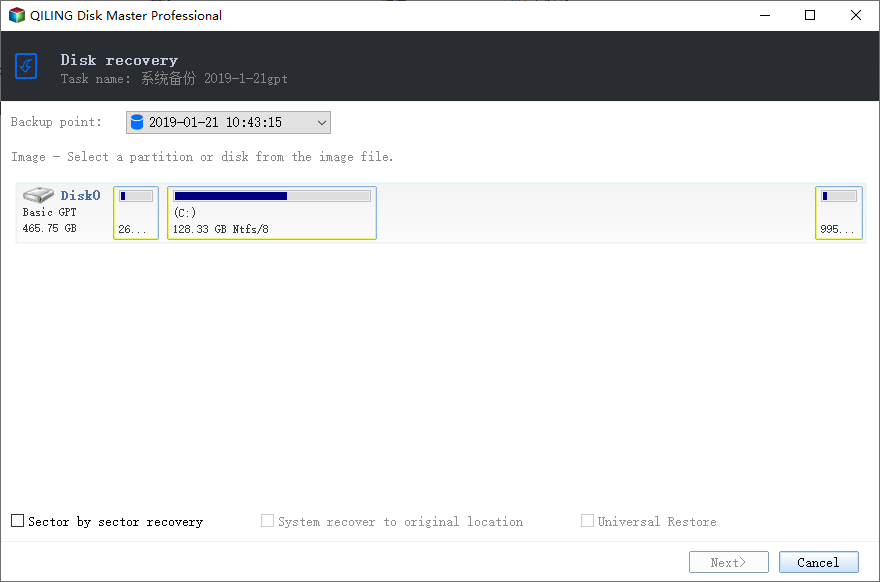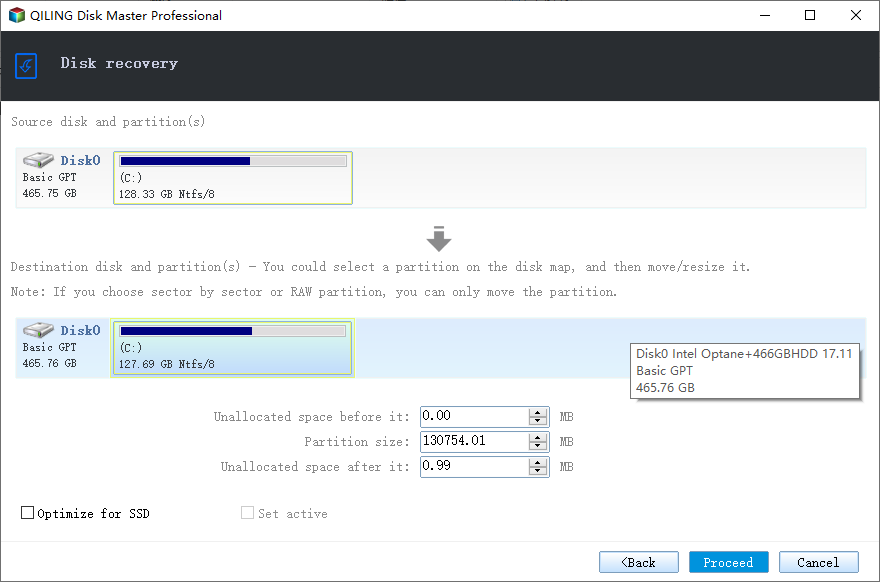Best Windows 10 Data and OS Migration Tool (2 Ways)
Quick Navigation:
- Why use Windows 10 migration tool?
- Does Windows 10 have a migration tool?
- Best Windows 10 transfer tool - Qiling Disk Master
- How to migrate Windows 10 to SSD in different situations?
- Summary
Why use Windows 10 migration tool?
Windows 10 migration is a process of operating system and data migration. Many users switch HDD to SSD for better performance. Generally speaking, there are two ways to deal with the installed operating system and configured system settings: clean install and system migration.
▶ Clean Install Windows 10: You need to download a Windows 10 Media Creation tool and create installation package on a USB drive or a CD. Then, follow a lot of practical operations to complete the installation.
☞ It is an error-prone process, especially for computer green hands. However, if you are interested in that way, you may refer to the tutorial of installing Windows 10 to SSD for detailed steps with screenshots. Besides the complicated progress, all settings, installed applications and user profiles of previous Windows 10 are gone. You need to configure everything from scratch.
▶ Use Windows 10 migration tool: It can perfectly overcome the shortcomings of clean install. Within several clicks, you can transfer Windows 10 and its user profile to target disk without reinstalling. Just boot off the target disk, and you’ll see the familiar operating environment.
Does Windows 10 have a migration tool?
When it comes to Windows 10 migration tool, Windows Easy Transfer is worth mentioning. It's a great choice to migrate your settings and local user profiles from old PC to new PC, which was first introduced in Windows Vista and later inherited in Windows XP/7/8/8.1.
Since Windows 8, you just need to sign in with the same Microsoft account on different devices, then it will transfer many of your settings. But in Windows 10, it's no longer available and replaced by Laplink. And this software is only applicable to moving user profile, files and applications.
Thus, if you want not only the Windows 10 profile migration tool, but also Windows 10 OS migration tool, you need to find a more cost-effective migration tool.
Best Windows 10 transfer tool - Qiling Disk Master
For the best Windows 10 migration assistant, there are several aspects you may take into consideration.
◑ Supporting a full system migration. That's to say, it should move all system-related drives to target place, because some Windows systems also contain System Reserved Partition, Recovery partition or EFI system partition.
◑ Cloning large drive to smaller drive without any obstacle. Considering that SSD is more expensive than HDD in the same capacity but has a better performance, some users may have purchased a smaller SSD which may be even smaller than the system drive for Windows 10 OS. In that case, the importance of intelligent sector clone is self-evident.
◑ Moving Windows 10 to a new computer, even with different hardware. By default, transferring Windows 10 from one computer to another is a little tricky, because different computers may have different hardware. So, in this situation, you need a Windows 10 migration tool that can clone hard disks regardless of the dissimilar hardware of each computer.
Qiling Disk Master Professional is such a Windows 10 OS migration tool you are looking for. It has the capability of performing Windows 10 migration to SSD as well as migrating Windows 10 to new computer. The two features, System Clone and Dissimilar Hardware Restore, play important roles in this task. Let’s get to know them one by one.
Please download the Windows migration tool - Qiling Disk Master Professional 30-day free trial to have a try. (Clone features in the free-trial version can only be demonstrated, you could upgrade to enjoy)
How to migrate Windows 10 to SSD in different situations
Following parts will show you how to transfer Windows 10 in the same computer and to a different computer separately. The two situations will make use of different features in this software.
For the same computer, you don't have hardware and license problem. Thus, both backup & restore (free way to transfer Windows 10 to new hard drive) and system clone (free-trial) feature can help you, but the clone feature is much easier. With it, you just need a few clicks and then boot off the new SSD after cloning. And I'll introduce the later one in detail.
For a new computer with different hardware, you'd better use the backup and restore feature to ensure all the necessary drivers required to start Windows are installed and your computer is bootable. That is what the “Universal Restore” feature can do for you.
Situation 1: Migrate Windows 10 to SSD in the same computer
To perform Windows 10 migration to SSD on the same computer:
- Connect or install the SSD to your computer. Install and launch Qiling Disk Master Professional.
- Click "Clone" and then "System Clone".
- The required system drive(s) is (are) selected by default. Choose the SSD as the destination disk here. Please back up important files in advance, because all partitions and data on SSD will be wiped finally.
- Preview the Operation Summary. Check "SSD Alignment" option to improve the performance of the destination SSD. Click "Proceed".
>> Sector by sector clone: it requires the destination disk is equal to or larger than the source drive. Do not check the option if you move Windows 10 to a smaller disk. Besides, sector by sector clone method takes much more time than the default method (clone only used part).
- When the process reaches 100%, click "Finish" to exit. Shut down your computer. You can either replace HDD with SSD or change boot priority to cloned SSD in BIOS to boot off Windows 10 from SSD.
Situation 2: Migrate Windows 10 to new computer with dissimilar hardware
To migrate Windows 10 to a new computer, the first thing is to create a system image for current Windows 10 with Qiling Disk Master Professional. Then, restore the system image to the new computer to finish OS migration.
#1. Create Windows 10 system image backup
- In Qiling Disk Master, click “Backup” and then "System Backup". Then it will select the operating system and boot-related partition(s) required to start Windows automatically.
- In the System Backup window, choose a path to store the image. It is suggested to backup to NAS, cloud drive, shared folder or external storage so that the new computer can access the image easily. Finally, click "Proceed".
#2. Restore Windows 10 image to new computer
Before taking further steps, you need to do some preparations accordingly for this task.
▶ The new computer is able to start normally: Download and install Qiling Disk Master on the new computer.
▶ The new computer cannot boot up: Create a bootable USB drive with Qiling Disk Master on the original computer. After you boot the new computer off the bootable USB drive, Qiling Disk Master will load up automatically.
Now, follow the steps below to restore Windows 10 to new computer:
- Start the new computer and launch Qiling Disk Master. To boot from the USB drive, please change boot order in BIOS. Also, connect the external storage to the new computer if system image is stored there.
- Click "Restore" and "Select Task" in Qiling Disk Master. It will automatically detect all the backup tasks you’ve created. You can also click on "Select Image File" to navigate to the system image.
- Select the system backup task and click "Next".
- Select "Restore this system backup" to restore your computer. Tick “Restore system to other location” below and click "Next".
- Select a partition on your new computer to restore the system image to and click "Next".
- Tick "Universal Restore" if your new computer has different hardware. After that, click "Proceed" to execute the operation.
Tips:
>> The destination disk/partition will be overwritten. Be sure to back up crucial data beforehand.
>> Some drivers, such as video/sound card drivers, NIC drivers, display driver etc, are not installed by Qiling Universal Restore, as they don’t affect system startup and can be installed manually in Windows after the successful restoration.
>> To restore Windows Server to dissimilar hardware computer, please turn to Qiling Disk Master Server.
Summary
Different strategies are provided for different circumstances. To be honest, Qiling Disk Master is a reliable Windows 10 migration tool for both migrating to SSD and new computer. You can use it as Windows 7 migration tool as well.
Except for migration, you still can use it as data protection software to protect your files continuously. You can enable file backup, basic sync, real-time sync, mirror sync, two-way sync and then set scheduled backup, such as, daily/weekly/monthly, etc. Anyway, try it out for yourself!
Related Articles
- Move Data from Windows 7 to Windows 10[5 Ways Included]
- Migrate OS with Best Free OS Migration Software
- Get the Best Free SSD Migration Tool for Windows Here!
- 4 Solutions to SanDisk SSD Slow in Windows 11, 10, 8, 7
SanDisk SSD slow down? Here we share several easy solutions to tackling with the solid-state drive running slow problem in Windows PC.
